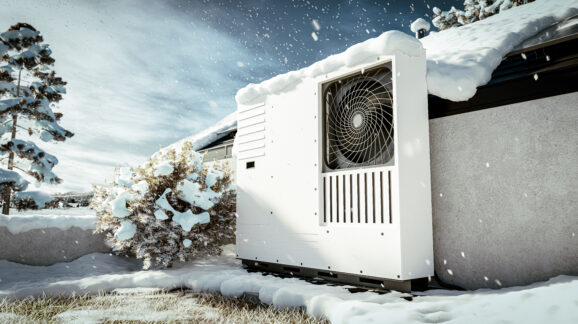Reliability is a Concern for Much of the U.S this Winter
The North American Electric Reliability Corporation’s (NERC) latest annual Winter Reliability Assessment sheds light on the vulnerabilities of the electrical grid across North America in the face of extreme winter weather.
NERC deems that “a large portion of the North American BPS [Bulk Power System] is at risk of insufficient electricity supplies during peak winter conditions.”
The areas at elevated risk include most of the central portion of the U.S, most of the Northeast and parts of the South, as well as parts of Canada.
In addition to identifying areas of the grid that are vulnerable to cold snaps, the report also identifies some of the major causes of this risk.
One finding is the unreliability of fuel availability for gas generating power plants. The natural gas supply chain relies on just-in-time delivery, meaning that if weather conditions force production or pipeline transportation to slow or stop, power production is immediately impacted because gas cannot be delivered to power plants on schedule.
Another concern is the government push for electrification of home heating has increased the demand for power at times when temperatures are the coldest, creating even more temperature-related demand for electricity. At the same time, the consistency of supply has changed. As more intermittent sources, especially solar, have entered the grid, these issues have gotten worse. Gas backup is required because of the intermittency (variability) of solar, and when solar goes offline, it requires sudden shifts from idling to significant production from the gas plants that are already facing less certain fuel delivery due to the weather.
Combined, these factors mean that temperature effects are magnified at the same time as supply becomes less consistent. This means that the plants that come online to replace variable solar have larger shortfalls to make up. As the report emphasizes, “generator performance and fuel issues are more likely to occur when generators are called upon with short notice.” It’s hard for power plants (usually natural gas ones in this scenario) to ramp up enough production suddenly to manage severe winter weather, and to have the fuel ready to do so.
As more intermittent sources (mostly wind and solar photovoltaic) enter the grid, and as more home heating is pushed toward electrification, these effects will only magnify.
On the coldest days, when loss of power is the most dangerous, this combination could be deadly. Reliable electric grids are always important, but in the winter the stakes are even higher. This NERC report serves as a stark reminder that policymakers have failed to prioritize reliability in favor of energy transition aims.
Read the full article at the Independent Women’s Forum.
